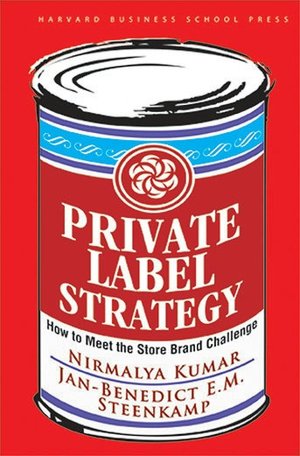Private Label Strategy: How to Meet the Store Brand Challenge pdf free
Par parente daniel le samedi, août 22 2015, 21:11 - Lien permanent
Private Label Strategy: How to Meet the Store Brand Challenge by Nirmalya Kumar, Jan-Benedict E. M. Steenkamp


Private Label Strategy: How to Meet the Store Brand Challenge Nirmalya Kumar, Jan-Benedict E. M. Steenkamp ebook
Page: 270
Format: pdf
ISBN: 9781422101674
Publisher: Harvard Business Review Press
While ConAgra Foods has been on a “very steep learning curve” since it acquired private label giant Ralcorp, bosses are more confident than ever that demand for store brands “is not only here to stay but will play a leading. So how does a retailer differentiate Family Dollar's private label development -- the value tier -- is driven by and targeted to that economically strapped customer, which is struggling more than ever. Most retailers consider manufacturer trade support to be both inadequate and insufficiently strategic.5 They have trouble converting trade promotion into profits. Although store brand 1 Information Resources, Inc., Times & Trends (October 2009). Now, in 2011, retailers are forced to rethink their store brand portfolio strategies in order to remain relevant in a world where, more than ever, consumers seek brands that not only offer value but speak in a unique, identifiable voice and deliver substance with purpose. Symphonyiri.nl/portals/0/articlePdfs/T_T-SeptOct-2009-Private-Label-US_Europe.pdf (accessed 17 January 2011). The grocery business is challenging for both manufacturers and retailers. Steenkamp has made a significant impact on executives and managers through his book, Private Label Strategy: How to Meet the Store Brand Challenge. "Branding in a Value Driven World," presented by Rachide, division vice president of private brands for Family Dollar, outlined the many challenges extreme-value-seeking shoppers face, and the ways that Family Dollar is tackling them. For grocers with well-established private label programs, too much private-label activity can be harmful; national brands drive traffic, and when store-brand penetration gets too high, consumers may begin to defect.19 . If consumers' perceptions are changing to the extent that they regard store brands of equal quality to brand-name products, brand-name marketers will be faced with a sobering challenge — either drop prices or lose market share. An excellent and comprehensive reference in this research has been the book by Kumar and Steenkamp entitled “Private Label Strategy: How to Meet the Store Brand Challenge” – an easy-reading and highly insightful text.